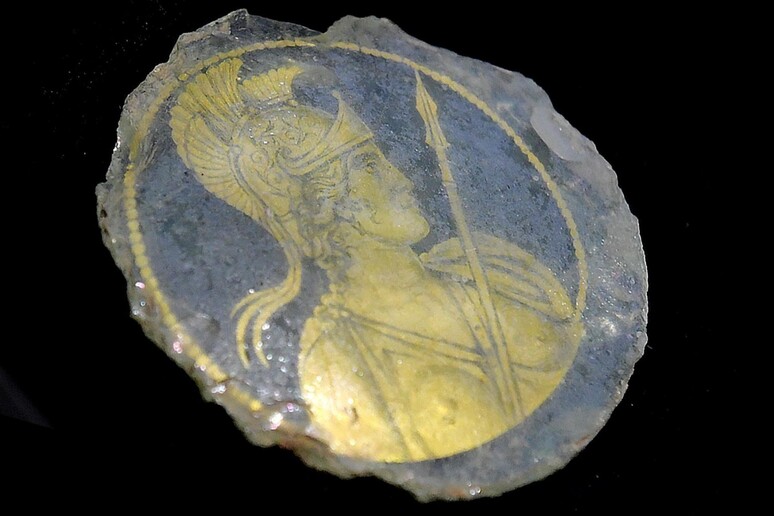(ANSAmed) - ROME, 02 FEB - A spear, helmet, proud profile -
after hundreds of years a refined artifact of ancient Rome
representing the personification of the Eternal City has come to
light from excavation work for the Metro C subway line.
The iconographic theme is already well-known, but it is the
first and only representation found so far on golden glass.
"Golden glass is already a very rare finding, but this has no
comparison" according to preliminary findings, Simona Morretta,
archaeologist of the special superintendency of Rome, explained
to ANSA.
"No golden glass with the personification of the city of Rome
had ever been found before".
The expert said its execution is "extraordinarily refined".
Originally, it was at the bottom of a cup, "a particular object
that was often used as a gift".
The person using the cup could in this way look at the image at
the bottom while drinking.
"We don't know whether it was really used to contain something
or as a decorative object, but certainly putting an image at the
bottom reflects that idea".
The artifact experienced different lives before: "It was a
precious object - she went on to explain - and it wasn't thrown
away after it broke or got damaged. But given that a glass cup
could not be repaired, the bottom was 'cut off' and perhaps it
was exhibited on furniture or hung on a wall".
The finding did not belong to the military facility found
during the excavation, which was abandoned in the middle of the
third century, and subsequently 'razed', the walls cut and
debris thrown inside to be covered by earth.
The piece of glass emerged under layers of earth and has a later
date.
"From an initial study, it looks like the artifact is from the
start of the fourth century", added the archaeologist.
It will now have another life and will be showcased in a
"display case in the station-museum of the Porta Metronia
subway", she concluded. (ANSAmed).
ALL RIGHTS RESERVED © Copyright ANSA











